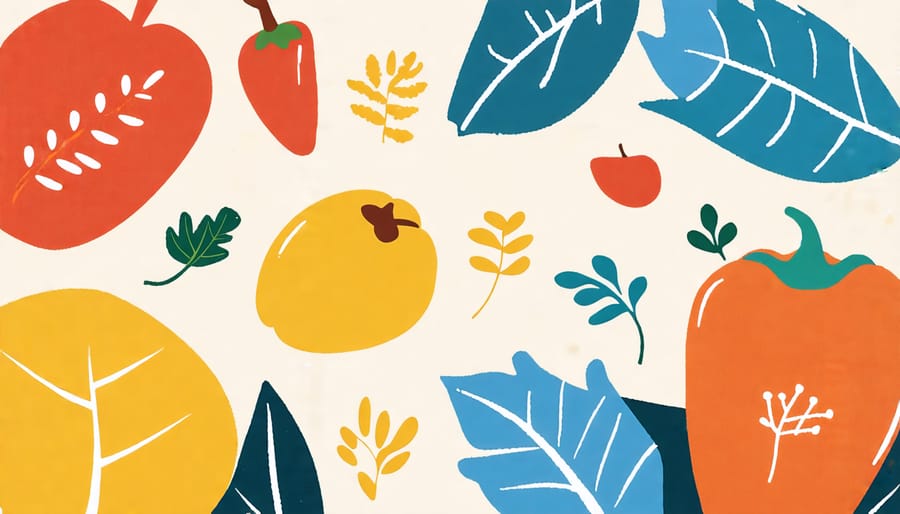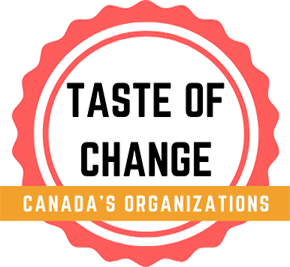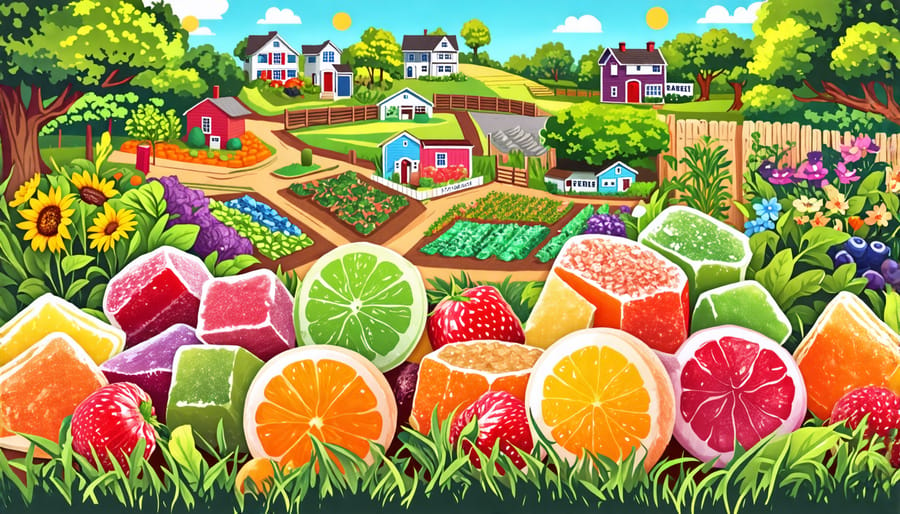Craving Sustainability? Explore How Freeze-Dried Candy Boosts Food Sovereignty
Explore freeze-dried candy options to imbue sustainability into indulgent treats while embracing food sovereignty. Support local innovators like ko-fi canada who offer exceptional treats aligning with community values. Collaborate with local food co-ops to source ethically produced ingredients, ensuring the food system fosters environmental stewardship. Educate community members on identifying and integrating sustainable treat options into daily consumption, emphasizing cultural diversity and ecosystem balance. Leverage urban gardening and permaculture techniques to create your own treat-enhancing edible flora, bolstering local food resilience and sovereignty.
Understanding Food Sovereignty and Sustainability
Defining Food Sovereignty
Food sovereignty is a transformative concept that emphasizes the right of people and communities to define their own food systems. It promotes a model where the priorities of local producers and consumers drive policy and practice, rather than corporate interests. Central to food sovereignty are principles of access to healthy and culturally appropriate food, the empowerment of local communities, and sustainable food production methods that respect ecosystems and biodiversity.
In Canada, food sovereignty is increasingly important as communities seek resilience against global food supply disruptions and climate change impacts. It encourages the localization of food systems, fostering a reconnection between people and the land. By supporting small-scale farmers and indigenous practices, food sovereignty advocates for food systems that are equitable, environmentally friendly, and economically viable.
This approach holds the promise of revitalizing rural economies and ensuring food security. It underscores the necessity of community-driven initiatives that value inclusivity and diversity, empowering individuals to make decisions that align with ecological sustainability and social justice. Participation in food sovereignty movements allows Canadians to take active roles in shaping a future where food systems nourish both people and the planet.

The Role of Sustainability in Food
Sustainability plays a pivotal role in transforming food systems by emphasizing ecological balance and community well-being. As we strive to reclaim food sovereignty, sustainable practices become crucial in nurturing local ecosystems and enhancing food security. By fostering environmentally-conscious approaches, such as regenerative agriculture and local food production, communities can create resilient and sustainable food systems that support both the planet and its people.
In Canada, these efforts are increasingly vital. Indigenous food sovereignty movements highlight the wisdom of traditional ecological knowledge in managing resources sustainably. Communities are encouraged to harness local resources, emphasizing economic and cultural empowerment while reducing carbon footprints. Creative solutions like incorporating freeze-dried treats into local markets bridge the gap between innovation and sustainability, offering a step toward self-sufficient food systems that respect diversity and heritage.
Active participation from individuals and communities is essential. By opting for sustainable treat options and supporting initiatives focused on food justice, Canadians can contribute to a sustainable future, fostering collaborations that prioritize the health of both our people and our planet.
The Innovative Appeal of Freeze-Dried Candy
What Makes Freeze-Dried Candy Special?
Freeze-dried candy offers a unique twist on traditional sweets while aligning with sustainable food practices. The process involves removing moisture from the candy under low temperature and pressure conditions, which enhances its shelf life without the need for preservatives. This not only makes freeze-dried candy more resilient and easier to store, but it also significantly reduces food waste—a crucial component of food sovereignty. Moreover, by preserving the natural flavors and colors of the original ingredients, freeze-drying ensures that taste and quality are retained, providing a delightful, crunchy treat that supports both taste satisfaction and sustainable principles.
In Canada, adopting freeze-dried candy as part of community-driven food initiatives can empower local producers and consumers to reduce their environmental impact. By choosing such innovative treats, communities emphasize the importance of sustainable food systems that prioritize long-term resilience over short-term convenience. Thus, incorporating freeze-dried candy into local food strategies not only satisfies sweet cravings but also fosters ecological stewardship and a commitment to food justice and sovereignty.

Sustainability Benefits
Freeze-drying offers significant environmental benefits, making it an exemplary method for sustainable treat production within food sovereignty movements. By removing moisture through a low-temperature process, freeze-drying extends the shelf life of foods without the need for artificial preservatives, thus minimizing food waste. This method prevents spoilage and retains nutritional value, making it possible to enjoy seasonal produce all year long. Additionally, the reduced weight of freeze-dried products translates to lower transportation emissions, a crucial factor in reducing the carbon footprint of food distribution, especially across Canada’s vast geography.
The process also requires less energy compared to traditional canning or dehydration, aligning with efforts to decrease overall energy consumption in food production. Communities embracing freeze-drying methods contribute to a resilient food system that values sustainability and autonomy. By integrating these practices, we can empower local food networks, creating a model that prioritizes environmental health and community well-being, ensuring that sustainable treats are both a delightful and responsible choice for all.
Integrating Freeze-Dried Candy into Food Sovereignty Movements
Local Production and Economic Impact
The local production of freeze-dried candy holds exciting potential for boosting Canadian economies, particularly by supporting small-scale producers committed to food sovereignty. By prioritizing locally sourced ingredients, this innovative treat can stimulate rural and urban collaborations, fostering a sense of community while reducing transportation emissions. Small farms and artisanal producers stand to benefit as they supply fruits and natural sweeteners, paving the way for diversified income streams and enhanced economic resilience.
Freeze-drying technology, accessible at a smaller scale, empowers local entrepreneurs to create high-quality, shelf-stable products that appeal to environmentally conscious consumers. This process enables producers to extend the shelf life of their products, allowing for year-round sales, thus reducing waste and increasing profitability. Moreover, cottage industry initiatives in various Canadian provinces could develop shared value chains, exchanging expertise and resources, reinforcing a collective approach to sustainability in food production.
By investing in local production, communities can cultivate unique flavors that celebrate regional biodiversity, thereby strengthening cultural ties and food traditions. Such endeavors resonate with the growing demand for sustainable food practices, offering a hopeful route toward economic growth that aligns with the principles of food justice. Empowering local producers to transform their natural bounty into a sweet delight not only enriches the palate but also bolsters community-driven economic development.

Community Involvement and Education
Community involvement is crucial in advancing sustainable treat options like freeze-dried candy within the framework of food sovereignty. By centering community voices and local knowledge, these initiatives can foster a deeper understanding of sustainable food practices. One effective way is through educational workshops that explore how freeze-drying works and its environmental benefits, creating opportunities for residents to experiment and innovate with local produce. These workshops can ignite interest among youth and adults alike, positioning freeze-dried treats as not only delicious but also an environmentally friendly choice. Furthermore, establishing partnerships with schools, community centers, and local organizations can extend the reach of these initiatives by integrating them into broader community food systems. Such collaborations can spotlight the cultural and ecological advantages of incorporating sustainably sourced ingredients into everyday diets, reinforcing the significance of food sovereignty. Community-led events can serve as platforms for sharing stories and successes, creating a sense of ownership and pride in local sustainable practices. Together, these educational efforts and community involvement strategies can cultivate a resilient and informed community, ready to embrace sustainable treat options and advocate for food justice across Canadian landscapes.
Challenges and Opportunities
Potential Barriers
The adoption of freeze-dried candy as a sustainable treat within the context of food sovereignty presents several challenges. One significant barrier is cost. Freeze-drying technology is expensive, which often leads to higher retail prices that may not be accessible for all members of a community, particularly those with limited financial resources. Additionally, access to freeze-dried products can be uneven across regions, with remote and rural Canadian communities potentially facing hurdles in availability due to logistical and distribution constraints. Consumer perceptions also play a critical role. While some may embrace these treats for their novelty and shelf-stability, others may be skeptical about their nutritional value or ecological benefits, compared to more traditional local food options. Overcoming these barriers requires community-driven outreach and education to illuminate the benefits of integrating freeze-dried candies into sustainable food practices while ensuring equitable access for all.
Future Opportunities
Expanding the market for sustainable treat options in the context of food sovereignty offers a wellspring of potential for innovative solutions and strategic partnerships. Food movement leaders across Canada are already crafting pathways to more resilient, community-driven food systems by supporting collaborations between local producers and small-scale entrepreneurs. This approach not only nurtures local economies but also promotes cultural diversity and environmental sustainability. Encouraging the inclusion of sustainable treats like freeze-dried candies into local markets can amplify public awareness and demand for ethical consumption. Communities can harness the power of co-ops and digital platforms to widen the reach of these products, laying the groundwork for a more equitable food future where consumers actively participate in creating meaningful change.
Conclusion
The integration of freeze-dried candy into sustainable food systems and food sovereignty initiatives holds immense potential for positive change. By incorporating these innovative sustainable treat options into local food networks, communities can foster greater resilience, reduce waste, and support environmentally conscious production practices. As we work towards a more just and sustainable food future, it is crucial for individuals to actively participate in grassroots movements that prioritize food sovereignty and ecological stewardship. By engaging with local farmers, artisans, and food producers, we can collectively build thriving food systems that nourish both people and the planet. The path forward requires a commitment to collaboration, creativity, and a willingness to embrace new approaches like freeze-dried candy. Together, we can cultivate a future where every community has access to nutritious, sustainable, and culturally relevant food, ensuring a brighter tomorrow for generations to come.


